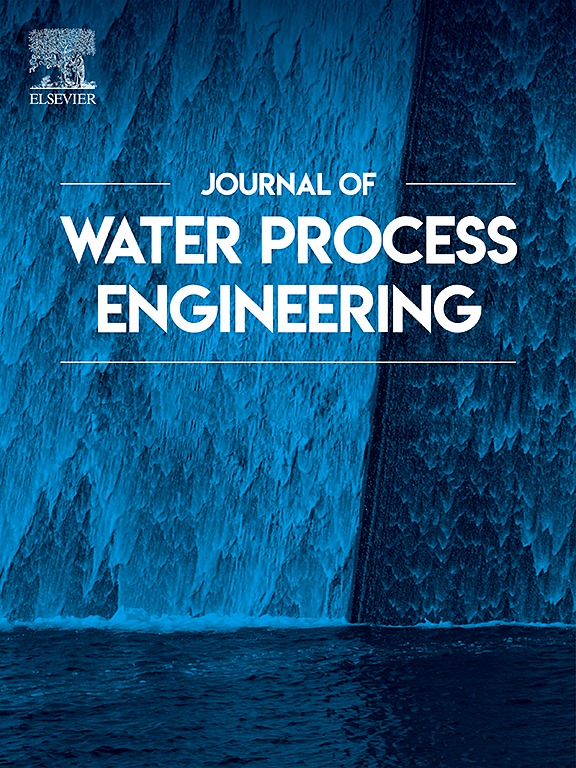Electrochemical behavior and the mechanism of nickel ion removal during zinc sulfate electrolysis via ultrasonic purification
IF 6.3
2区 工程技术
Q1 ENGINEERING, CHEMICAL
引用次数: 0
Abstract
The purification of zinc sulfate electrolyte is an essential process in zinc hydrometallurgy. The agglomeration of zinc powder and difficulty in removing nickel ions are considered the main challenges in the purification of zinc sulfate electrolyte. Herein, we developed an ultrasonic method to substitute nickel ions with zinc with a high removal efficiency (95.27 %) under optimized conditions. The removal percentage under the ultrasonic condition was 25.26 % higher than that under the conventional condition. Physical characterization indicates that the ultrasonic field reduces zinc powder agglomeration, breaks up inclusions and the passivation layer, and enhances the mass transfer during the nickel removal reaction. Electrochemical studies reveal that ultrasonic vibrations and cleaning reduce the overpotential of nickel removal through zinc powder replacement. In-situ modification of the zinc anode enhances zinc powder activity and increases the potential difference in zinc‑nickel primary batteries, thereby boosting the reaction's thermodynamic driving force. Finally, the COMSOL numerical simulation theoretically verified that the heat and mass transfer processes of the solution were accelerated under the ultrasonic condition. The findings of this study can guide the purification process in zinc hydrometallurgy and provide novel insight into ultrasonically boosted chemical reactions.
求助全文
约1分钟内获得全文
求助全文
来源期刊

Journal of water process engineering
Biochemistry, Genetics and Molecular Biology-Biotechnology
CiteScore
10.70
自引率
8.60%
发文量
846
审稿时长
24 days
期刊介绍:
The Journal of Water Process Engineering aims to publish refereed, high-quality research papers with significant novelty and impact in all areas of the engineering of water and wastewater processing . Papers on advanced and novel treatment processes and technologies are particularly welcome. The Journal considers papers in areas such as nanotechnology and biotechnology applications in water, novel oxidation and separation processes, membrane processes (except those for desalination) , catalytic processes for the removal of water contaminants, sustainable processes, water reuse and recycling, water use and wastewater minimization, integrated/hybrid technology, process modeling of water treatment and novel treatment processes. Submissions on the subject of adsorbents, including standard measurements of adsorption kinetics and equilibrium will only be considered if there is a genuine case for novelty and contribution, for example highly novel, sustainable adsorbents and their use: papers on activated carbon-type materials derived from natural matter, or surfactant-modified clays and related minerals, would not fulfil this criterion. The Journal particularly welcomes contributions involving environmentally, economically and socially sustainable technology for water treatment, including those which are energy-efficient, with minimal or no chemical consumption, and capable of water recycling and reuse that minimizes the direct disposal of wastewater to the aquatic environment. Papers that describe novel ideas for solving issues related to water quality and availability are also welcome, as are those that show the transfer of techniques from other disciplines. The Journal will consider papers dealing with processes for various water matrices including drinking water (except desalination), domestic, urban and industrial wastewaters, in addition to their residues. It is expected that the journal will be of particular relevance to chemical and process engineers working in the field. The Journal welcomes Full Text papers, Short Communications, State-of-the-Art Reviews and Letters to Editors and Case Studies
 求助内容:
求助内容: 应助结果提醒方式:
应助结果提醒方式:


